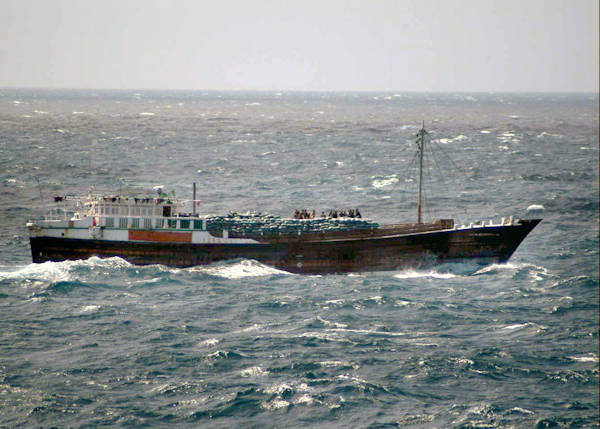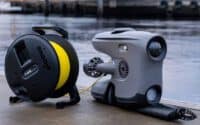A Deep Dive into Modern Maritime Piracy: Impact & Solutions

The Modern Landscape of Piracy
Challenges Faced by Commercial Vessels
* Please send feedback/suggestions to editor @ shipuniverse.com
Physical Barriers
Water Based Defense Systems
Surveillance and Detection Systems
Communication Systems
Safe Rooms
Strategies and Best Practices
Background on the Resurgence of Piracy in Key Global Regions
In recent years, there has been a concerning resurgence of piracy, reminiscent of the piracy tales of old, but with a modern, and often more violent, twist. From the coastlines of Somalia in the early 2000s to the evolving threats in the Gulf of Guinea and the waters of Southeast Asia, piracy remains an unsettling challenge for the global maritime industry.
Emphasis on the Importance of Vessel, Cargo, and Crew Safety
The economic implications of hijacked vessels and stolen cargo are substantial, but more paramount is the safety of the crew onboard these ships. These individuals, essential cogs in the wheel of global trade, find themselves at the frontline of this maritime menace, emphasizing the need for robust defense mechanisms and proactive strategies to ensure their safety.
The Modern Landscape of Piracy
Brief Overview of Piracy Hotspots: Gulf of Guinea and the Strait of Malacca
The Gulf of Guinea, stretching from the coastlines of West Africa to Central Africa, has become the epicenter of modern piracy, characterized by kidnappings and violent attacks. Pirates here are better organized, more aggressive, and are known to venture further out to sea to target unsuspecting vessels. Meanwhile, the Strait of Malacca, a narrow stretch of water between the Malay Peninsula and Sumatra, remains one of the world’s busiest shipping lanes. Its geographical confines make it a vulnerable point, and pirates have been known to exploit this bottleneck for quick and opportunistic attacks.
The Impact of Piracy on Global Trade and Shipping Industries
The threat of piracy introduces a multitude of economic challenges. Increased insurance premiums, costly rerouting of shipping lanes, and interruptions in trade flows are immediate repercussions. There’s also a longer-term loss of investor and trade partner confidence in regions where piracy is rampant. It’s estimated that global piracy costs the world economy billions of dollars annually, even when no ransom is paid.
Challenges Faced by Commercial Vessels
Understanding the Profile of Modern Pirates
Modern pirates differ significantly from the romanticized, swashbuckling figures of lore. Today, they are often part of organized criminal networks, armed with sophisticated weapons and equipped with fast boats. Driven by economic hardships, political unrest, or sheer opportunism, these pirates possess a deep understanding of maritime operations, allowing them to execute complex attacks with precision.
Common Tactics and Threats Posed by Pirates
Pirates employ a myriad of tactics to capture and control vessels. Stealthy night attacks, using small skiffs to approach and board unsuspecting ships, are common. They may also masquerade as fishermen or utilize “mother ships” to extend their operational range. Once aboard, pirates threaten and, in some cases, harm crew members to exert control. Kidnapping for ransom, especially in the Gulf of Guinea, has become a prevalent modus operandi, capitalizing on the lucrative prospects it presents.
The dangers posed by piracy cannot be understated, demanding global attention and strategic intervention. This article will delve further into the tools and tactics employed by ships to defend against these threats, emphasizing the ever-evolving nature of maritime security.
Discover Your Ideal Anti-Piracy Solutions Today
Physical Barriers:
Razor Wire: Razor wire, also known as barbed tape, is a mesh of metal strips with sharp edges arranged at intervals. When deployed around the perimeters of a ship, particularly on handrails, bulwarks, and lower parts of the deck, it serves as a formidable deterrent against unauthorized boarding attempts. Its design is specifically aimed to cause injury, discouraging pirates from trying to climb over it. The effectiveness of razor wire lies in its visibility (dissuading potential threats) and the physical challenges it presents to attackers. While not foolproof, when combined with other measures, it adds a significant layer of defense.
Cost: From $50 to $200 per roll (each roll typically covers around 50 feet). Depending on the size of the vessel, several rolls might be required. For a medium-sized cargo ship, outfitting with razor wire might cost between $1,000 to $4,000.
Electric Fences: Maritime electric fences are adaptations of the traditional land-based security measure. These fences, when activated, deliver a non-lethal electric shock to anyone attempting to breach them. Positioned around the vulnerable parts of a ship, electric fences act as a psychological and physical barrier against pirates. The sight of an electrified fence, often accompanied by warning signs, can deter pirates, while the shock itself can incapacitate or dissuade those who dare to touch. Importantly, these systems are designed to prevent serious injury but still deliver a formidable jolt.
Cost: Basic systems start at approximately $5,000 to $10,000 for smaller vessels. More comprehensive systems for larger vessels can range from $20,000 to $50,000. Operational costs, including electricity and maintenance, may add another $500 to $1,500 annually.
Anti-boarding Devices: Beyond the standard barriers, a variety of specialized anti-boarding devices have been developed. These include:
- Anti-climb spikes and poles: Sharp-edged implements affixed to the sides of vessels to prevent easy climbing.
- Booby traps: Devices that may release noxious gases or other deterrents when triggered.
- Slippery foam: A substance that can be sprayed on the sides of ships, making surfaces too slick for pirates to get a grip.
Cost: Anti-climb spikes and poles: Prices vary widely based on material and design, but a typical set might cost between $100 to $500. Booby traps: Depending on sophistication, prices can range from $500 for basic devices to upwards of $5,000 for advanced systems. Slippery foam systems: Kits, which include dispensers and foam canisters, might start at $2,000 and can go up based on capacity and coverage.
Installation and Maintenance:
- Depending on the device or system, installation costs can range from a few hundred dollars (for simple setups) to over $10,000 for sophisticated systems on larger vessels.
- Annual maintenance and inspection, especially for electric fences and high-tech anti-boarding devices, might range between $500 to $3,000.
Water-based Defense Systems:
1. Long Range Acoustic Devices (LRAD): Long Range Acoustic Devices, commonly known as LRADs, utilize a directed beam of sound as a deterrent. These devices can emit powerful, focused sound waves that are disorienting and even painful to those within its range. Used as an anti-piracy tool, LRADs can dissuade pirate boats from approaching a ship, keeping them at a safe distance. They also serve a dual purpose: before using the deterrent mode, they can act as loudspeakers to communicate warnings to potential threats.
Cost: Basic LRAD systems, which are smaller and have a limited range, can start at approximately $20,000 to $30,000. Advanced LRAD systems with extended ranges and additional features can cost between $60,000 to $100,000.
2. Water Cannons: Water cannons are high-pressure water systems that can eject water with significant force. In a maritime context, they are used to deter and repel pirates trying to board a vessel. The force of the water can knock over small skiffs or destabilize larger boats, making it difficult for pirates to approach. Additionally, the sheer force can prevent boarding attempts by physically pushing potential attackers away from the vessel.
Cost: Portable, smaller capacity water cannons might range from $5,000 to $15,000. Industrial-scale water cannons, designed for larger vessels and with greater range and discharge capacities, can cost anywhere from $20,000 to $60,000.
Surveillance and Detection Systems:
1. Radar Systems: Radar systems have long been a staple in maritime navigation. In the context of anti-piracy efforts, they are essential in identifying and tracking potential threats from considerable distances. Modern radar systems can distinguish between larger vessels and smaller skiffs, offering early warnings to crews and allowing them more time to implement defense measures.
Cost: Basic maritime radar systems suitable for smaller vessels start at around $1,000 to $5,000. Advanced systems with more extensive range and better discrimination capabilities can range from $20,000 to $100,000, especially for larger commercial vessels.
2. Drones: Unmanned aerial vehicles, or drones, are increasingly being adopted for maritime surveillance. Equipped with high-resolution cameras, they can be deployed to scout surrounding waters, providing real-time aerial visuals. This capability is particularly useful for spotting smaller pirate vessels that may be harder to detect by radar alone. Additionally, some drones can be equipped with thermal imaging to detect vessels at night.
Cost: Consumer-level drones with decent camera quality can start from $500 to $2,000. Professional-grade drones with advanced surveillance capabilities, longer flight times, and better camera systems can range from $5,000 to $30,000.
3. Night Vision and Thermal Imaging Cameras: These cameras are crucial for nighttime operations, a period when many pirate attacks occur. Night vision cameras amplify available light to produce a clear image, while thermal imaging detects heat sources, such as human bodies or boat engines. These systems can be mounted on various parts of the ship to offer a panoramic view of the surroundings.
Cost: Consumer-level night vision cameras range from $200 to $2,000. Professional or military-grade thermal imaging systems can cost anywhere from $5,000 to $50,000, depending on resolution, range, and other features.
Communication Systems:
1. Satellite Phones: In regions far from terrestrial communication networks, satellite phones become an indispensable tool. Unlike traditional mobile phones that rely on cell towers, satellite phones connect directly to satellites, ensuring communication capability even in the most remote parts of the oceans. For vessels, this means maintaining contact with headquarters, reporting positions, and calling for assistance if needed.
Cost: Equipment: Basic satellite phone models start from $500 to $1,200. Advanced models with more features, better battery life, and data capabilities can range from $1,500 to $3,000. Monthly Plans: Depending on the provider and the package chosen, monthly plans can range from $50 to $150. Pay-as-you-go plans or prepaid minutes are also available and can vary in cost.
2. Distress Signal Devices: These devices, also known as Emergency Position-Indicating Radio Beacons (EPIRBs) or Personal Locator Beacons (PLBs), are used to alert rescue authorities in the event of an emergency. When activated, they transmit a distress signal with the vessel’s location to search and rescue organizations, allowing for a timely response. These devices are particularly crucial in cases of pirate attacks, as they provide a covert way to call for help without alerting the attackers.
Cost: Equipment: Basic EPIRB models suitable for maritime use start from $400 to $800. More advanced models with features like GPS integration and longer battery life can range from $800 to $1,500. Registration and Maintenance: EPIRBs need to be registered with national authorities (usually at no additional cost), and periodic maintenance or battery replacement might incur costs of around $100 to $200 every few years.
Safe Rooms (Citadels):
1. Design and Importance: Safe rooms or citadels act as fortified areas on a ship where the crew can take refuge in the event of a pirate attack. Designed to be impenetrable from the outside, they serve as a last line of defense. Within these rooms, crews can communicate with the outside world, control the ship’s engines, and wait for assistance, all while being protected from potential threats. Citadels are equipped with reinforced doors, walls, and ventilation systems that can withstand attempts at forced entry.
2. Provisions and Communication Tools Within: A well-designed citadel will be equipped with:
- Communication devices, such as satellite phones and VHF radios.
- Emergency rations and water supplies to sustain the crew for several days.
- Medical supplies for immediate first aid.
- Ventilation systems to ensure the flow of fresh air.
- Control systems to allow the crew to disable the ship’s engines, rendering it immobile.
Costs: Factors Influencing Pricing:
- Size and Capacity: The size of the citadel and its intended capacity will influence costs. A small room for a crew of 10 will cost less than a larger one designed for 30.
- Materials: The type of materials used, especially for reinforcement, will affect the overall price.
- Communication and Control Systems: Incorporating advanced communication and ship control systems will add to the cost.
- Installation: Building a citadel during the ship’s construction might be more cost-efficient than retrofitting an existing vessel.
Estimated Costs:
- Basic citadels, typically retrofitted into existing rooms, might start from $20,000 to $50,000.
- More advanced citadels, especially those designed during a ship’s construction phase or those equipped with sophisticated systems, can range from $50,000 to $200,000 or more.
Discover Your Ideal Anti-Piracy Solutions Today
Strategies and Best Practices
In the complex landscape of maritime piracy, hardware and technology are only part of the equation. Human factors play a crucial role in both preventing and responding to threats. By adopting a comprehensive approach that involves strategic planning, crew training, and collaboration with relevant authorities, ships can significantly enhance their security posture.
1. Training Crew on Anti-Piracy Measures:
- Rationale: A well-informed and trained crew is the first line of defense against piracy. Through proper training, crew members can recognize early signs of threats, adopt preventive measures, and take coordinated actions during an attack.
- Methods: Regularly conduct anti-piracy drills on board, simulating potential attack scenarios. These drills ensure that the crew knows where to go, what to do, and how to communicate during a threat.
- Benefits: Training not only equips the crew with knowledge but also builds confidence. A confident crew is more likely to respond effectively and swiftly, reducing the potential harm during an attack.
2. The Importance of Constant Vigilance and Early Threat Detection:
- Rationale: Early detection provides a vessel with more time to take preventive measures, alert authorities, or change course to evade potential threats.
- Methods: Equip the ship with effective surveillance tools, maintain regular watch routines, and foster a culture of alertness among the crew. Use binoculars, radar, and other available resources to continuously scan the surrounding waters, especially when transiting known hotspots.
- Benefits: Early threat detection can deter pirates (who typically prefer easy targets) and give naval or security forces ample time to reach a vessel in distress.
3. Liaising with Naval and Security Forces in High-Risk Areas:
- Rationale: Naval patrols and private security forces play a pivotal role in safeguarding maritime routes. Their presence can deter pirate activities, and their rapid response capabilities can be life-saving during an attack.
- Methods: Maintain open channels of communication with naval commands when transiting high-risk zones. Inform them of your route, schedule, and any suspicious activities observed. Additionally, consider contracting onboard private security teams when sailing through particularly dangerous areas.
- Benefits: A proactive relationship with security forces enhances the protective umbrella around a vessel. Pirates are less likely to target ships they know are in regular contact with naval forces or those escorted by armed security teams.
The Economic Impact of Piracy
Maritime piracy, beyond its immediate human consequences, also exerts a profound economic impact on the shipping industry and, by extension, the global economy. These costs manifest both directly and indirectly:
1. Direct Costs:
- Ransoms: When pirates succeed in capturing a vessel, they often demand hefty ransoms for the release of the crew, ship, and cargo. These ransoms can range from hundreds of thousands to several million dollars.
- Damages: Pirate attacks can lead to significant damages to vessels, either due to direct conflict or negligence during the period the pirates control the ship. Repairing these damages incurs tangible costs.
- Equipment Investments: To defend against potential attacks, ship owners invest in security equipment and systems. While these investments safeguard crew and cargo, they also represent a considerable capital outlay.
2. Indirect Costs:
- Increased Insurance Premiums: Due to the risks associated with piracy, especially in hotspots, insurance companies often raise premiums for vessels plying these routes. Over time, these increased rates accumulate, representing a significant expense for shipping companies.
- Rerouting Ships: To avoid piracy-prone areas, vessels might take longer routes. While this may increase safety, it also means higher fuel costs and longer delivery times.
- Delays: Pirate attacks or the threat thereof can cause delays in shipments. These delays can disrupt supply chains, leading to contractual penalties and lost business opportunities.
Maritime piracy, an age-old challenge, has shown a remarkable ability to evolve and adapt in the modern age. As pirates employ newer tactics and exploit vulnerable regions, the shipping industry faces heightened risks. These risks are not only in terms of immediate danger to crew and cargo but also in the broader economic ramifications that ripple through global trade.
Addressing this multifaceted threat requires a similarly multifaceted approach. While technological advancements provide an array of defensive tools, the role of well-trained human responses remains paramount. Through a combination of proactive measures, collaboration with security forces, and ongoing training, the shipping industry can navigate these treacherous waters with enhanced confidence.
In the face of such challenges, one truth remains constant: the safety of the crew, the security of cargo, and the smooth flow of global commerce are priorities that require concerted, collaborative efforts from stakeholders across the maritime spectrum.
Discover Your Ideal Anti-Piracy Solutions Today
Additional Resources
- International Maritime Bureau (IMB): Their Piracy Reporting Centre provides updated reports and live maps of piracy incidents.
- United Nations Office on Drugs and Crime (UNODC): They have a maritime crime program which regularly publishes data and reports on piracy and armed robbery against ships.
- Oceans Beyond Piracy (OBP): A program initiated by the One Earth Future (OEF) Foundation, OBP has detailed analysis and reports on piracy, including economic costs.
- International Maritime Organization (IMO): The IMO also provides regular updates on piracy and armed robbery against ships.
- Regional Cooperation Agreement on Combating Piracy and Armed Robbery against Ships in Asia (ReCAAP): For piracy specifics in the Asian region, ReCAAP’s Information Sharing Centre is an excellent source.
- Maritime Security Centre – Horn of Africa (MSCHOA): This is an initiative by EU naval forces, providing timely information on piracy in the Horn of Africa region.
- Maritime Executive: A leading maritime news source that often covers piracy-related incidents and trends.
- BIMCO: The world’s largest international shipping association provides guidelines and updates on piracy threats.

Do you have a Maritime Product or Service that may be of interest to Shipowners? Tell us about it here!
Do you have feedback or insights? Please reach out to editor @ shipuniverse.com



